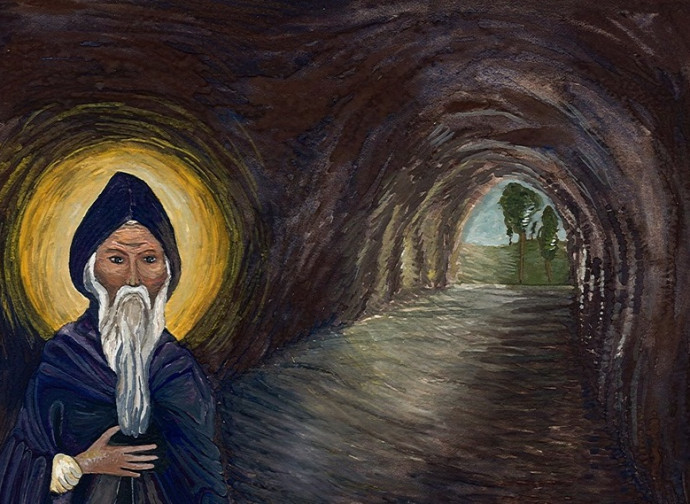Saint Macarius the Great
Monks used to call him the "Lamp of the Desert" not only because of his virtues but because his face shone in the dark

Monks used to call him the "Lamp of the Desert" not only because of his virtues but because his face shone in the dark. Monikers apart, Saint Macarius the Great (c. 300-390), a disciple of Saint Anthony the Abbot, was certainly among the Egyptian Fathers who most contributed to the spread of monasticism.
Born in Upper Egypt, he had worked as a camel driver in his youth, engaged in the transport of saltpetre. At the age of 30 his life changed, he became an anchorite and lived for some time under the spiritual guidance of Saint Anthony, fortifying himself through fasting and prayers and working as a basket weaver. He then left his master and was ordained a priest, spending the rest of his life mainly in the Desert of Scetis (Wadi al-Natrun), where around the year 350 he founded the famous monastery which today bears his name and which came to host hundreds of monks. In fact, due to the influence of other Desert Fathers and disciples of Anthony, such as Saint Pachomius (c. 292-348), this was the time when in and around Egypt numerous monasteries were founded and began to adopt a monastic style of cenobitic life.
Together with his friend Saint Macarius of Alexandria († 395) (with whom not be confused), the Saint, who was faithful to the Nicene Creed, was exiled around 373-375 to an islet in the Nile. This was due to the hostility of the Arian heretic Lucius who, thanks to the support of Emperor Valens, had usurped the episcopal see of Peter II of Alexandria, the legitimate successor of Saint Athanasius († 373). During the exile of the two Macariuses, it happened that the daughter of a pagan priest became ill and was believed by the locals to be possessed by an evil spirit. Macarius the Great and Macarius the Alexandrine prayed beside the woman, who recovered. This event made such a big impression on the inhabitants, they converted to Christianity and built a church. Hearing the news and fearing new conversions, Lucius and Valens allowed both Saints to return to their region.
The attribution to Saint Macarius of 50 homilies is uncertain, as there is no trace of them in most 4th-century Christian authors. The 5th-century priest and historian Gennadius of Massilia (Marseille), in his De Viris Illustribus (an ideal continuation of Saint Jerome's collection of short biographies of important Christians), attributes to Saint Macarius the Great a letter addressed to the younger monks.




